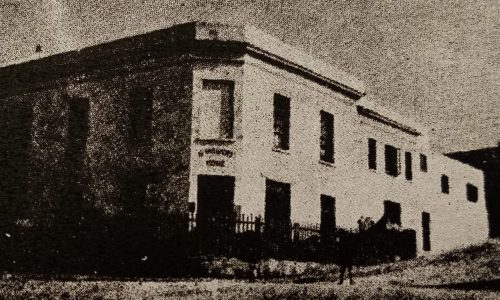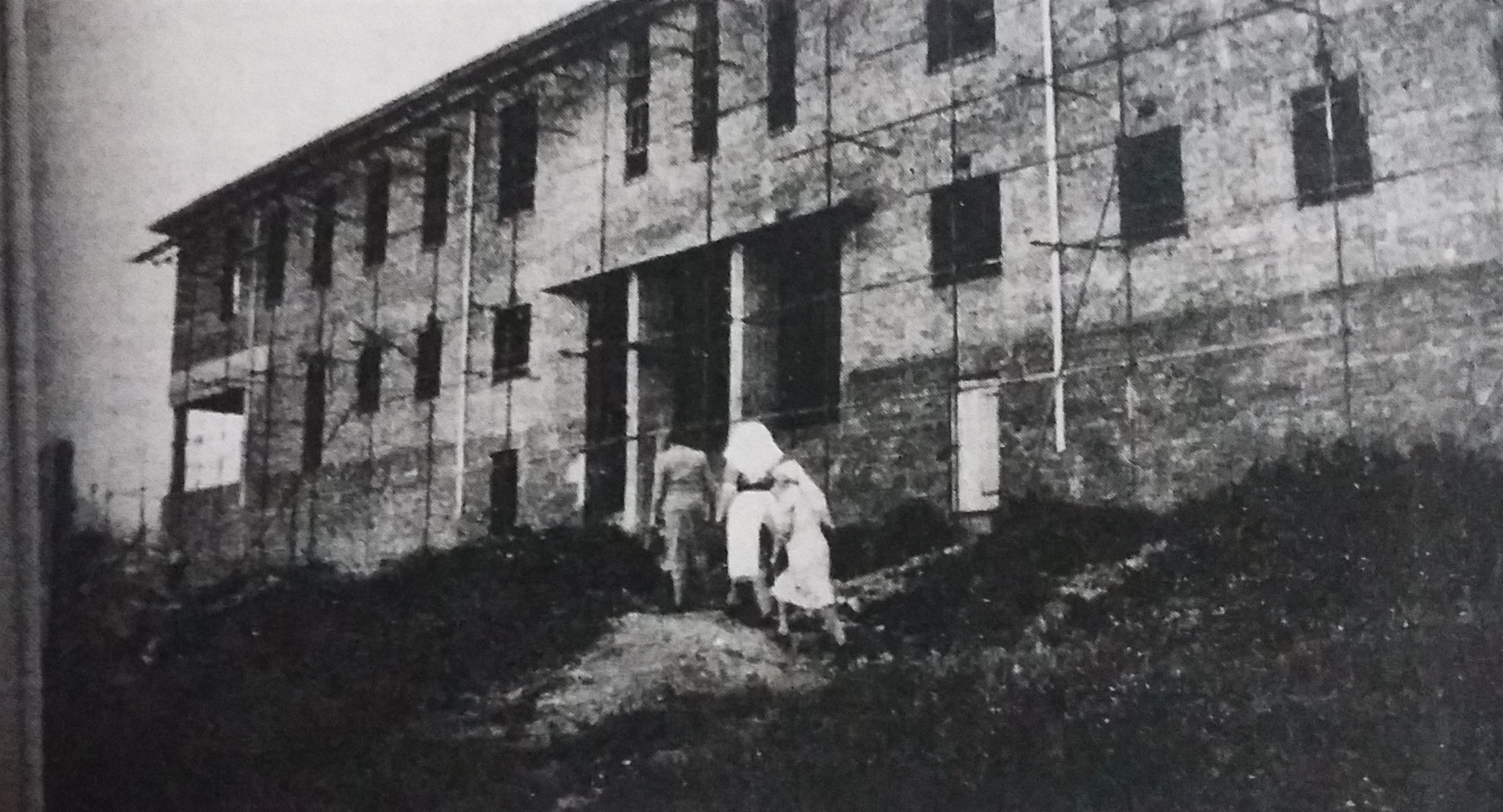St Monica's In practice
Core Functions
St. Monica’s primary goal was to provide maternity care to some of Cape Town’s poorest residents irrespective of race, creed or marital status. The home understood that working-class mothers, especially those from outside of the white community, often experienced a double burden: not only did they not have the income necessary for a hospital birth, they were also frequently without the support and facilities for a home birth. In order to help mitigate this burden the home, the home developed the following three initiatives:
1. Midwifery Training School
St. Monica’s provided practical and academic training to prospective midwives, a large proportion of whom were coloured women and were denied access to other training centres.
2. District Practice
St. Monica’s ran a thriving district practice in which qualified nurses and midwives provided medical assistance and education to pregnant women in underprivileged areas of Cape Town.
3. Maternity Ward
St. Monica’s established a maternity ward to accommodate inpatients suffering from medical complications during pregnancy or lacking the adequate facilities to give birth at home.
In addition, St. Monica’s opened Cape Town’s first free antenatal clinic in 1919 and in 1933 began organising an infant welfare clinic where first-time mothers could bring their newborns for weekly check-ups. Both clinics were well attended, with the home providing free medical treatment and advice to hundreds expectant mothers from across the peninsula.
The home provided an excellent service, reporting in 1934 that in the seventeen years since its establishment its nurses had attended over 5138 individual cases. There had been just 23 maternal deaths in connection with this work.
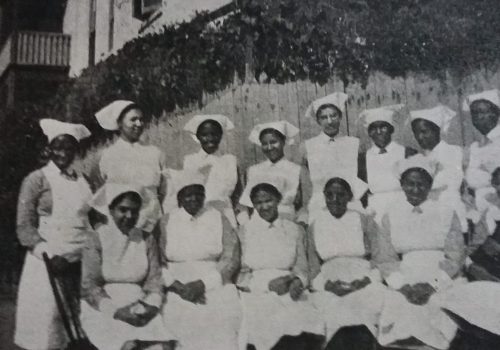
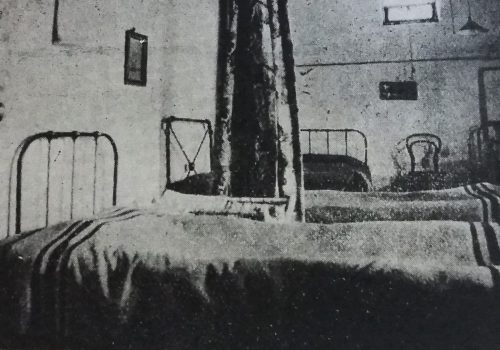
Tackling Infant Mortality
As public health statistic began to gain in importance throughout Europe during the early decades of the twentieth century, Cape doctors, many of whom were trained in British Medical Schools, became increasingly determined to lower the city’s high infant mortality rate. Speaking at Cape Town’s first Child Welfare Conference in 1917, Cape Town’s then Medical Officer of Health, Dr. Jasper Anderson commented on:
“The importance of retaining and maintaining the largest number of infants alive and in strong physical condition, especially in view of the enormous loss in consequence of the war of our own adults who physically, intellectually and temperamentally are of the most to the state […] and also because of declining birth rates”
While Dr. Anderson and many of his colleagues were primarily concerned with white infant mortality, St. Monica’s recognized that infant mortality was a problem affecting all sectors of the population. In fact, the coloured infant mortality rate was almost three times that of the white infant mortality rate; a fact which was only fully realised in 1937 when such figures first started being recorded for the population at large.
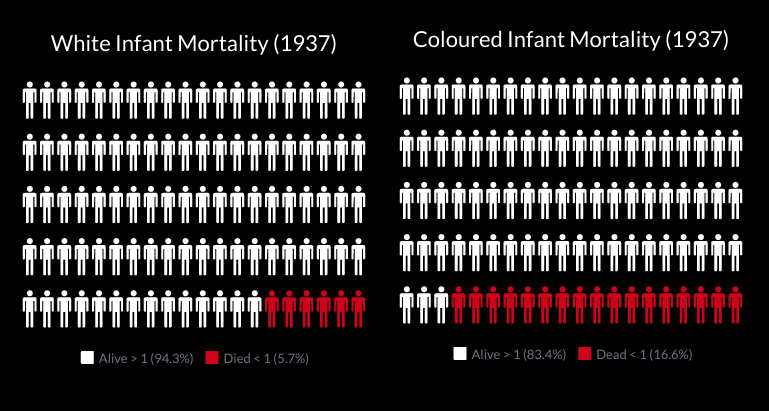
Disease and Destitution
As the below article suggests one of the other things which made St. Monica’s unique was its willingness to take in pregnant women who because of disease or destitution were not able to secure a place at any other maternity hospital. This meant caring for women with rheumatism and pneumonia, as well for those who had been the victims of polio, measles etc. St. Monica’s even took in women suffering from venereal disease, a form of disease which was even more stigma inducing then than it is now. St. Monica’s also regularly accepted women who were homeless or without family.
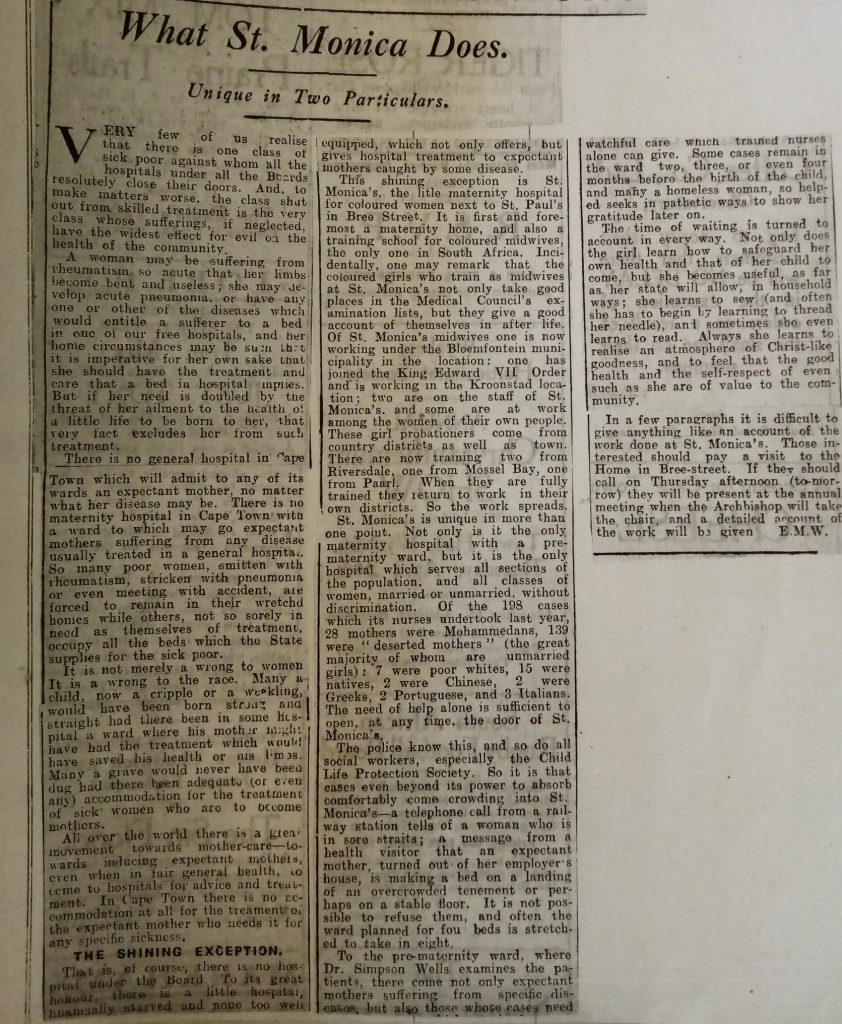
Staff & Funding
The home typically had a permanent staff of six consisting of a Hon. Medical Officer, a Matron, a Ward Sister, a District Sister and two Staff Nurses. Because of the medical nature of the establishment, senior posts were reserved for individuals with significant prior experience and training. Initially this meant relying on recruits from Britain, although this changed as the nursing profession became more established in South Africa and more women sat the Colonial Medical Council exams.
St Monica’s was largely dependent on grants from the Community Chest and private donations to fund the Home’s upkeep. Street collections were held regularly, while letters of appeal were published in the Cape Times and displayed on tram indicators free of charge. Even so, it was not unusual for the home to be short of money and the conditions under which the staff was forced to operate were, at best, rudimentary.
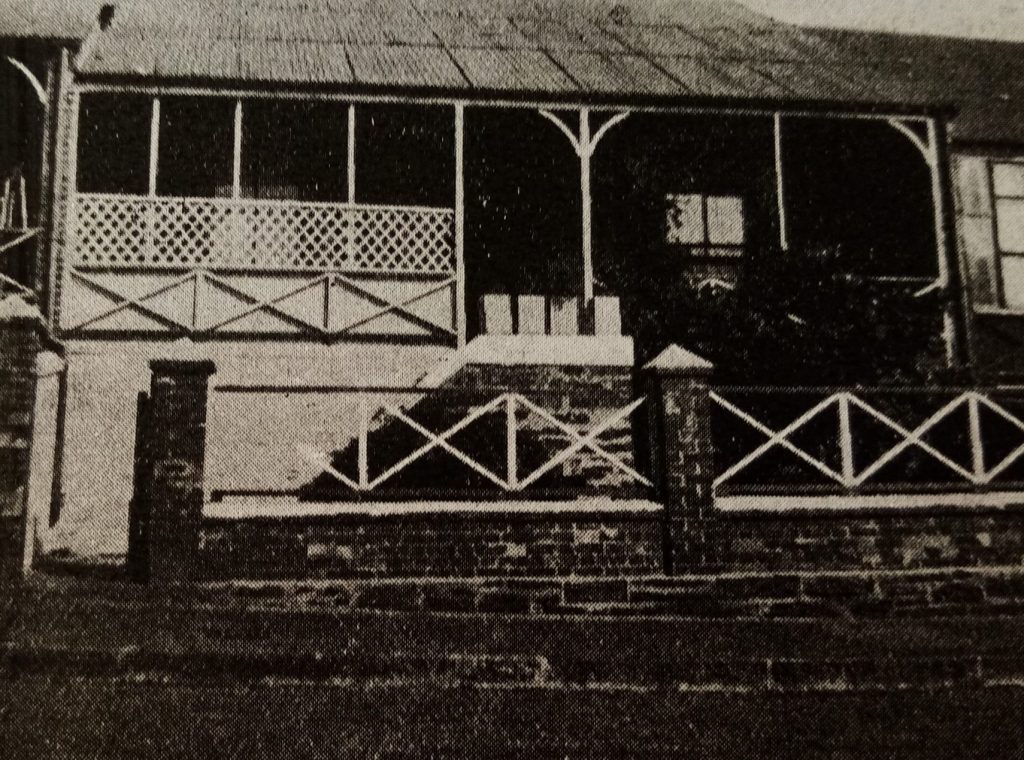
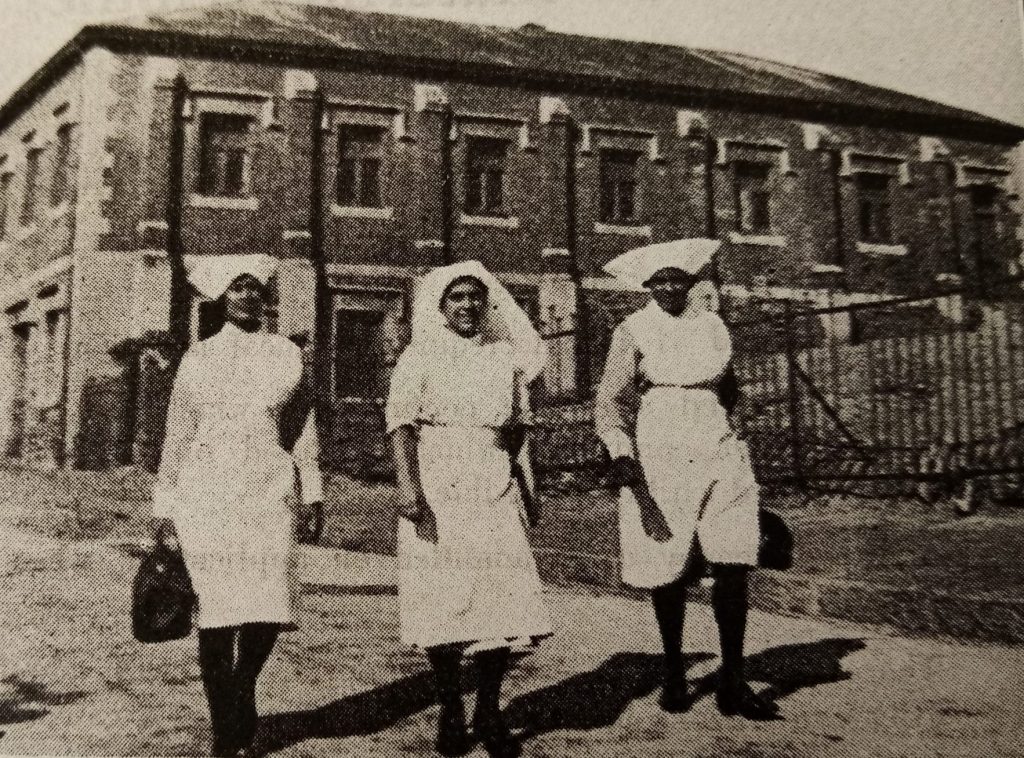
Premises & Buildings
St. Monica’s original premises at 182 Bree Street was suitable when the home was first established but over the course of time would become increasing cramped and dilapidated. An article published in the South African Medical Journal (see here for the full journal archives) plainly describes the dire state into which the building had fallen:
“The accommodation was inadequate and unsuitable. The roof leaked, the walls were damp and the place was rat-infested. The so-called nursery measured 12 x 13 ft., and was a glorified passage between a small room where patients’ meals were served and waiting mothers were bathed, and a corridor leading to the ward […]. In winter the temperature was freezing and in summer it often rose to 90°F or more. Normally it contained about 14 cots placed touching each other in two rows. At times, however, as many as 26 infants were housed here and on these occasions baskets were placed on the floor under the cots.”
As result of these less than ideal conditions the home embarked on a nine year campaign to raise the funds for a new building. In early 1950 the building committee announced the completion of a new St. Monica’s, now in Lion Street. Although it remained relatively small, the new home had accommodation and equipment to rival that some of the best hospitals and nursing homes in the country.
